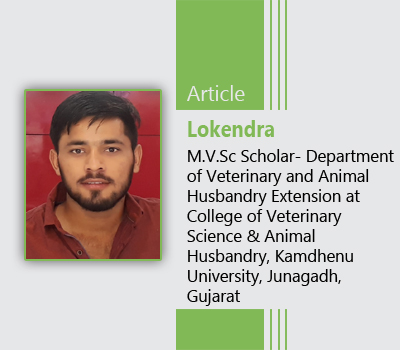Introduction
Poultry rearing and production are the most essential livestock activity for many poor rural people around the world, serving as a source of revenue as well as a tool for poverty alleviation. To enhance the socio-economic and nutritional status of rural residents, particularly landless or low-income households, backyard poultry is a manageable and inspiring business with a modest initial investment and high economic return. Poultry farming increases the production of vital protein sources such as meat and eggs, which raises nutritional standards and creates employment opportunities. Rural women have historically played a significant role in poultry industry and are frequently in charge of the entire process of feeding to marketing, which is different from the way of other livestock species are produced.
Rural women and backyard poultry farming
The empowerment of women through entrepreneurship training and self-employment in many socio-economic areas, such as backyard poultry, creates new prospects for raising socio-economic status of farmers. Micro-credit is an effective tool for empowering women to generate self-employment and supplemental income for women’s financial management. The security, decision-making ability, and mobility of women are the primary three markers of women’s empowerment in India, which are three metrics found very low level.
Status of poultry population in India
The poultry industry in India is primarily split into two sub-sectors, one having a highly organized commercial sector accounting for around 62.78% of the overall market share and the other being unorganized (backyard farming) accounting for approximately 37.2% of the total market share. Backyard poultry is a part of the unorganized sector and is significant in improving the socio-economic and nutritional situation of the poor, which is also referred to as this group’s main source of income. According to the 20th Livestock Census, All India Report, DAHD&F (2019), India has 851.81 million poultry. According to FAOSTAT production figures (2019), India ranks 3rdin egg production in the world.
In the country, 114.38 billion eggs produced in 2019–20, increased from 78.48 billion in 2014–15. In 2014–15, the annual growth rate of egg production was 4.99 percent. Since then, there has been a noticeable improvement, with egg production growing by 10.19 percent in 2019–20 over the previous years. Egg availability per person was 86 eggs annually in 2019–20.
Advantages:
- Poultry has good market demand and prices, is simple to handle, and requires little outside inputs.
- A good example of recycling agricultural and domestic trash is feeding backyard poultry. Particularly women come up with creative methods to reuse trash.
- Poultry farming can help rural communities combat poverty, especially among women and children. Poultry farming raises women’s income and also improve their social position and power in the home.
- In contrast to extensive poultry farming, backyard poultry farming produces higher-quality eggs and meat, and the faeces of backyard fowl are utilized as a fertilizer to improve the soil’s fertility. Backyard poultry farming works well with other types of farming like growing mushrooms etc.
- Through the empowerment of women, livestock interventions that target species within the authority of women, such as backyard poultry farming, may have a greater impact on the security of household food and nutrition. Male family members typically have numerous sources of income, but the primary source of revenue for female family members is frequently the selling of poultry products.
- As compared to intensive or semi-intensive poultry farming, backyard poultry farming decreases environmental pollution per unit of poultry produced because the main issue with these methods is environmental pollution brought on by the high bird density.
Constraints:
- Inadequate transportation facilities, restricted access to market information, and a distance from markets.
- Lack of immunizations and difficulty for women to get veterinary services.
- Limited access to information, technology, and extension services.
- Limited access to credit for purchase of high-quality feed and medicines.
- Traditionally the purview of women, poultry keeping is experiencing a change in roles and attitudes as men become aware of its economic value. This affects how much power of women have over the money made.
Recommendations and lessons
- The key to ensuring women have access to a well-organized marketing system and a higher price for their livestock goods.
- Poultry operations are more productive in areas where women are trained in latest poultry husbandry techniques and have access to services for poultry health.
- Access to loans is frequently necessary for the development of poultry in rural regions.
- In order to determine production parameters and provide access to rewards, gender is a crucial component of a poultry project.
- Policymakers and planners need to promote and take into account the role that women play in poultry production and rural development.
- Development of rural women group based activities and small women co-operative societies in rural areas may play big role in poultry development.
Conclusion
The rural landless poor, marginal and small farmers in India have little resources and can only use poultry farming as a source of income. The rural poultry sector’s growth can undoubtedly help India’s fight against poverty. Backyard poultry farming is the cheapest and richest source of high-quality protein, which also aids in improving the nutritional health status of poor rural farmers. Landless, marginal and small-scale farmers in rural areas may create work opportunities around the year, it can be significantly contribute to women empowerment.

Lokendra¹*, S. W. Sawarkar¹, G. M. Chaudhari², Manisha Doot³
¹*,¹,²Department of Veterinary and Animal Husbandry Extension, College of Veterinary Science & Animal Husbandry, Kamdhenu University, Junagadh-362001(Gujarat)
³Department of Veterinary Public Health & Epidemiology, College of Veterinary and Animal Science, RAJUVAS, Bikaner-334001 (Rajasthan)
¹*Corresponding author: Lokendra.jhang.95@gmail.com















